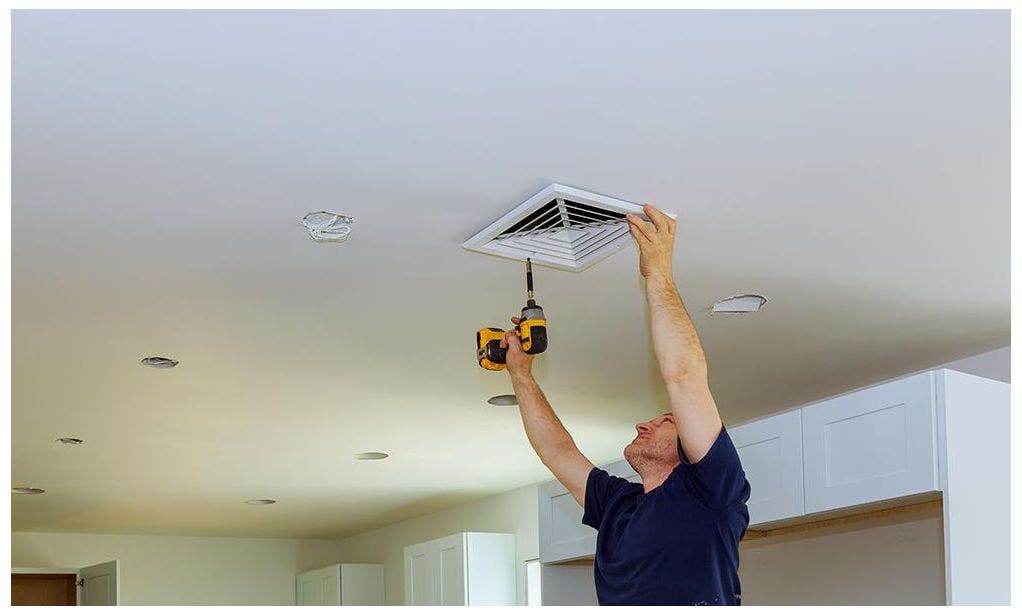Grille and Register Mysteries
Residential grilles and registers have a variety of mysteries that seem to have escaped many who design, install, sell, and service air distribution systems in our industry. Let's take a look at several of these riddles and how understanding them can help improve HVAC systems.
What Names Do I Use?
Registers, vents, grilles, diffusers, and other subcategories are descriptors used for residential applications.
For decades, NCI has taught simple terminology covering most basic residential purposes. Registers cover supply duct outlets and direct air into the building. Grilles cover return air ducts that pull air out of the building. When referring to a mixed batch of grilles and registers, the term grilles can describe a combination of both.
Supply Registers and Airflow Distribution
Supply registers control, mix and distribute air throughout a room. Besides the commonly used stamp faced registers, many register types control air movement in a room and enhance comfort.

When you offer register and grille upgrades to your customers, start your education on a manufacturer's website. These websites usually have photos of various registers. You can also find engineering data that describes the specifications of each model. I invite you to spend an hour studying different register and grille data. Then, envision the solutions each may provide for your projects.
Solutions contained in engineering specifications typically include Airflow ranges, Dimensions, Face velocity, Throw, Spread, and Deflection degrees.
Studying this engineering data will lead you to custom-select registers to resolve air distribution problems your customers want you to fix.
Return Grille Selection
The return grille's primary function is to cover the ends of ductwork where they connect to each room. But that is just the beginning.
When selecting return grilles, choose correctly sized grilles to reduce noise and pressure drop. Select the look, style, and color of grilles to suit your customer's desires.
You can also use return air filter grilles to help with air filters with excessive static pressure drop and resistance to airflow. Installing filters in multiple return air filter grilles helps increase filter surface area and lower return-side static pressure.
 It's essential to understand return grilles rarely influence room air patterns regardless of the return grille's face velocity.
It's essential to understand return grilles rarely influence room air patterns regardless of the return grille's face velocity.
This illustration shows that return inlet velocity only influences an area about 1.5 times the diameter away from the grille face. A supply register's air velocity can often be felt much farther away, so it will influence room airflow more.
What Your Customers See
Besides the thermostat, registers and grilles are the only system components that your customers regularly see. Their visible nature makes registers and grilles an obvious candidate for enhancements when replacing equipment and upgrading duct systems.
Draw your customer's attention to existing grilles and note their condition. Many are visually downright disgusting. Replacing grilles is high margin work with higher appreciation value from customers. Carry samples of higher-end grilles with you and offer replacements.
If grilles have been painted to the walls or ceiling, removing them can cause an added liability. Paint can stick to the grilles and, when removed, will pull paint and drywall paper from the wall or ceiling. This mistake is difficult to repair and often results in repainting the room. To prevent this problem, carefully cut the paint with a sharp razor knife around the grille before removing it. Also, use replacement grilles with a wider frame to cover minor defects.
Air Mixing Zones
When selecting replacement grilles and registers with various air patterns, think about air mixing zone principles. Good designers ensure they consider air mixing zones to avoid direct high-velocity air blowing on room occupants. The illustration to the left shows a room with supply registers on the floor and a ceiling return grille. A two-foot air mixing zone is designed inward from each wall and the ceiling.
The illustration to the left shows a room with supply registers on the floor and a ceiling return grille. A two-foot air mixing zone is designed inward from each wall and the ceiling.
When selecting floor registers, choose a register deflection from zero to fifteen degrees pointing in from the wall. This choice will mix the supply air with room air and keep the curtains and wall hangings from blowing.
The same principle applies to ceiling and sidewall registers. Since the air velocity zone of a return grille is so shallow, they rarely need adjustable louvers.
Floor Registers Air Mixing Zone Noise Levels
Grille and register engineering data also includes a sound rating for each grille at various airflows. It's important to note that noise levels increase as velocity and airflow increase through a grille. This value may play a critical role in your selection depending on the type of room you're conditioning.
The most common unit of measurement used for sound with registers and grille is Noise Criteria, abbreviated NC. Noise Criteria equals decibels (dB) minus 10. In-field noise criteria can approximately be measured with an inexpensive sound meter or app for your smartphone.
Standards are published for acceptable noise levels that depend on room use. Some common NC ratings are:
- Bedrooms – 20 to 25 NC
- Family rooms – 25 to 30 NC
- Kitchens – 30 to 35 NC
- Apartments – 35 to 40 NC.
Pressure Drop
Pressure drop is the resistance to airflow exerted by a grille, and it changes as airflow changes. Ideally, each register and grille in a system should have similar resistance, or system airflow will move to grilles with the lowest pressure drop.
To compensate for registers that may need a higher pressure to throw air across a larger or wider room, you may increase duct size leading to that register to offset increased resistance.
Article by Rob ‘Doc’ Falke, president, National Comfort Institute, Avon, Ohio. Reprinted by permission of Contracting Business.

